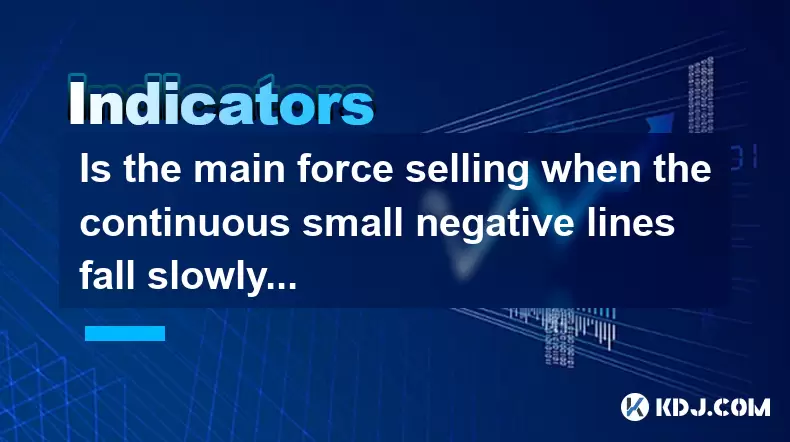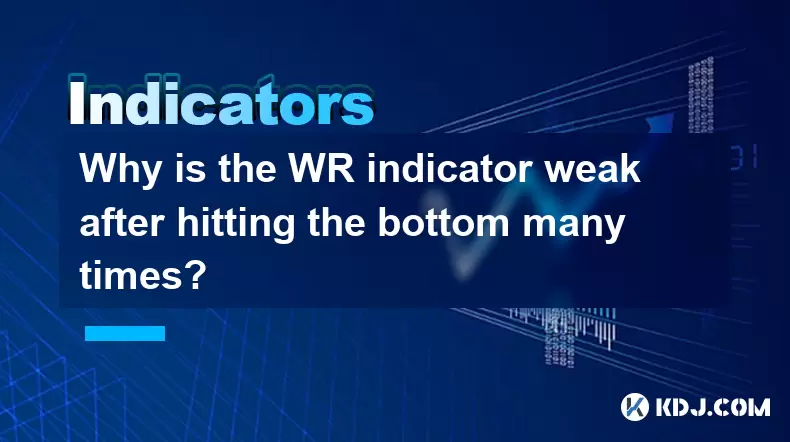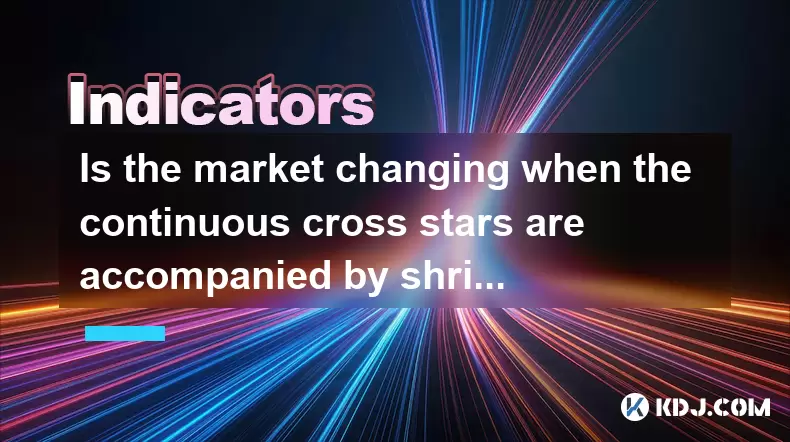-
 Bitcoin
Bitcoin $101,898.5005
-0.75% -
 Ethereum
Ethereum $2,258.1125
-1.07% -
 Tether USDt
Tether USDt $1.0004
0.01% -
 XRP
XRP $2.0178
-2.93% -
 BNB
BNB $624.0243
-1.53% -
 Solana
Solana $134.3298
-0.90% -
 USDC
USDC $0.9999
0.01% -
 TRON
TRON $0.2675
-2.05% -
 Dogecoin
Dogecoin $0.1538
-1.96% -
 Cardano
Cardano $0.5482
-1.11% -
 Hyperliquid
Hyperliquid $35.5636
5.45% -
 Bitcoin Cash
Bitcoin Cash $453.4902
-1.66% -
 Sui
Sui $2.5134
-2.97% -
 UNUS SED LEO
UNUS SED LEO $9.1292
1.77% -
 Chainlink
Chainlink $11.8457
-1.60% -
 Stellar
Stellar $0.2312
-2.73% -
 Avalanche
Avalanche $16.9721
0.29% -
 Toncoin
Toncoin $2.7549
-3.82% -
 Shiba Inu
Shiba Inu $0.0...01081
-1.10% -
 Litecoin
Litecoin $80.8250
-0.71% -
 Hedera
Hedera $0.1374
0.21% -
 Monero
Monero $305.4827
-2.36% -
 Ethena USDe
Ethena USDe $1.0006
0.00% -
 Dai
Dai $1.0000
-0.01% -
 Polkadot
Polkadot $3.2085
-3.12% -
 Bitget Token
Bitget Token $4.0845
-3.13% -
 Uniswap
Uniswap $6.3353
-1.63% -
 Pi
Pi $0.5085
-0.70% -
 Pepe
Pepe $0.0...08913
-3.82% -
 Aave
Aave $232.7090
-0.58%
Is the main force selling when the continuous small negative lines fall slowly?
A slow decline with small negative candlesticks may signal profit-taking, accumulation, or institutional selling, requiring volume and on-chain analysis for context.
Jun 23, 2025 at 03:35 pm

Understanding Continuous Small Negative Lines in Cryptocurrency Charts
In cryptocurrency trading, continuous small negative lines refer to a pattern where the price of an asset declines gradually over time with small bearish candlesticks. These candlesticks typically have short bodies and may or may not have wicks. This pattern often appears during periods of low volatility or when traders are slowly taking profits or selling pressure is building up subtly.
It's important to understand that small negative lines don't always indicate panic selling. Instead, they might represent a controlled selloff by larger players — often referred to as "whales" or institutional investors — who want to avoid triggering large sell-offs or drawing attention to their activities. This behavior can be observed across major cryptocurrencies like Bitcoin (BTC) and Ethereum (ETH).
What Does It Mean When Prices Fall Slowly?
A slow decline in price accompanied by continuous small negative lines suggests that the market is losing momentum rather than crashing suddenly. This kind of price action is usually seen when there’s no strong buying interest and sellers are gradually pushing the price lower without resistance.
This pattern can be interpreted in multiple ways:
- It may reflect profit-taking after a rally.
- It could signal early signs of capitulation before a deeper correction.
- It might also indicate accumulation by smart money while retail traders lose confidence.
The key point is that slow negative movement doesn’t necessarily mean a bearish reversal is imminent. Traders should look at volume, order flow, and on-chain metrics to get a clearer picture of what's happening behind the scenes.
Is This a Sign of Main Force Selling?
The term main force selling refers to significant entities such as hedge funds, whales, or institutions offloading large positions. When this occurs, it can lead to a gradual decline in price instead of a sharp dump, especially if done strategically.
To determine whether main force selling is happening during a series of small negative lines, one must analyze:
- Volume analysis: If the volume remains consistently moderate but not explosive, it may suggest controlled selling.
- On-chain metrics: Tools like Glassnode or Santiment can help identify large transfers or wallet movements that correlate with price drops.
- Order book depth: A thinning buy wall or increasing sell walls can indicate pressure from big players.
These indicators can help distinguish between regular retail selling and strategic institutional dumping.
How to Analyze Market Depth During This Pattern
Market depth is crucial for understanding whether main force selling is occurring. Here’s how you can assess it:
- Check the order book: Look at exchanges like Binance, Coinbase, or Kraken. If you see large sell orders being placed just above the current market price, it may indicate that someone is trying to suppress the price.
- Monitor trade sizes: Use tools like Whale Alert or blockchain explorers to track unusually large trades. If these coincide with the appearance of small negative candles, it supports the idea of coordinated selling.
- Compare bid-ask spreads: Wider spreads during declining prices can signal reduced liquidity, which is often a tactic used by large sellers to manipulate price more efficiently.
By combining these techniques, traders can gain insight into whether the slow drop with small negative lines is due to organic market behavior or orchestrated selling by powerful actors.
Technical Indicators That Help Confirm the Trend
Certain technical indicators can provide additional context when observing continuous small negative lines:
- Moving Averages: If the price stays below key moving averages (e.g., 50-day or 200-day), it suggests ongoing weakness.
- Relative Strength Index (RSI): If RSI is trending downward but not yet in oversold territory, it indicates weakening bullish momentum rather than exhaustion.
- Volume Profile: Areas with high volume can show support or resistance levels. If the price continues to fall through these levels without a bounce, it reinforces the idea of sustained selling pressure.
- Order Flow Indicators: Some advanced platforms offer real-time order flow data, allowing traders to see whether large sells are hitting bids or placing limit orders.
Using these tools together can help traders interpret whether the gradual decline is part of a broader distribution phase or just normal market fluctuation.
Frequently Asked Questions
Q1: Can small negative lines appear during accumulation phases?
Yes, they can. Sometimes, large players will create artificial weakness by selling small amounts to shake out weak hands before accumulating at lower prices.
Q2: How do I differentiate between retail and institutional selling using candlestick patterns?
Retail selling often comes with erratic candle sizes and high volatility, while institutional selling tends to manifest as controlled, steady declines with minimal panic.
Q3: Is it safe to buy during a slow downtrend marked by small negative lines?
Buying during such phases can be risky unless confirmed by other signals like increased volume on bounces, bullish divergences, or positive on-chain metrics.
Q4: What role does sentiment play in interpreting small negative lines?
Market sentiment plays a critical role. Even if fundamentals are strong, prolonged negative sentiment can cause slow selling pressure that isn’t necessarily driven by main force activity.
Disclaimer:info@kdj.com
The information provided is not trading advice. kdj.com does not assume any responsibility for any investments made based on the information provided in this article. Cryptocurrencies are highly volatile and it is highly recommended that you invest with caution after thorough research!
If you believe that the content used on this website infringes your copyright, please contact us immediately (info@kdj.com) and we will delete it promptly.
- Binance, Founder, and ATH: Navigating the Crypto Landscape
- 2025-06-23 18:25:12
- Token Transfers Get a Human Touch: Emotion-Driven Design in Web3
- 2025-06-23 18:45:13
- Shiba Inu: Price Recovery on the Horizon? Buy Orders Suggest Potential Upswing
- 2025-06-23 18:45:13
- BTC Bounce or Bust? Navigating the Bull Market to $982K and Beyond!
- 2025-06-23 19:05:12
- Crypto Analyst Comeback: BTC Bounces Back Amidst Geopolitical Jitters
- 2025-06-23 19:05:12
- XRP Price Under Pressure: Breakout or Breakdown at Pattern Edges?
- 2025-06-23 18:25:12
Related knowledge

Is it effective when the DIF line suddenly crosses the zero axis when the volume is shrinking and the market is trading sideways?
Jun 23,2025 at 07:29pm
Understanding the DIF Line in Technical AnalysisThe DIF line, or the Difference Line, is a critical component of the MACD (Moving Average Convergence Divergence) indicator, widely used in technical analysis across cryptocurrency and traditional financial markets. It represents the difference between the 12-period EMA (Exponential Moving Average) and the...

Why is the WR indicator weak after hitting the bottom many times?
Jun 23,2025 at 07:56pm
Understanding the WR Indicator in Cryptocurrency TradingThe Williams %R (WR) indicator is a momentum oscillator used by traders to identify overbought and oversold levels in the market. It ranges from 0 to -100, with readings above -20 considered overbought and below -80 considered oversold. In the context of cryptocurrency trading, where volatility is ...

Is the shrinking cross star after the historical high a signal of topping?
Jun 23,2025 at 05:56pm
Understanding the Shrinking Cross Star PatternIn technical analysis, candlestick patterns are essential tools for traders to predict potential price movements. One such pattern is the shrinking cross star, which appears as a small-bodied candle with long upper and lower shadows, indicating indecision in the market. When this pattern forms after an asset...

Is the market changing when the continuous cross stars are accompanied by shrinking volume?
Jun 23,2025 at 07:42pm
Understanding Continuous Cross Stars in Cryptocurrency ChartsIn the world of cryptocurrency trading, candlestick patterns play a crucial role in predicting price movements. One such pattern is the continuous cross star. This pattern typically appears when there's uncertainty among traders, and it often signals a potential reversal or continuation depend...

Is the high opening and low closing and huge volume the next day a trap for more?
Jun 23,2025 at 05:07pm
Understanding High Opening and Low Closing with Huge VolumeWhen traders observe a high opening followed by a low closing and massive volume the next day, it often raises concerns about whether this is a trap set by larger players in the market. This pattern typically indicates strong volatility within a short period, which can confuse retail investors. ...

How to interpret the MACD's second golden cross on the water but insufficient volume?
Jun 23,2025 at 05:01pm
Understanding the MACD Indicator and Its SignificanceThe Moving Average Convergence Divergence (MACD) is a widely used technical analysis tool in cryptocurrency trading. It helps traders identify potential buy or sell signals by showing the relationship between two moving averages of an asset’s price. The MACD line, signal line, and histogram are the th...

Is it effective when the DIF line suddenly crosses the zero axis when the volume is shrinking and the market is trading sideways?
Jun 23,2025 at 07:29pm
Understanding the DIF Line in Technical AnalysisThe DIF line, or the Difference Line, is a critical component of the MACD (Moving Average Convergence Divergence) indicator, widely used in technical analysis across cryptocurrency and traditional financial markets. It represents the difference between the 12-period EMA (Exponential Moving Average) and the...

Why is the WR indicator weak after hitting the bottom many times?
Jun 23,2025 at 07:56pm
Understanding the WR Indicator in Cryptocurrency TradingThe Williams %R (WR) indicator is a momentum oscillator used by traders to identify overbought and oversold levels in the market. It ranges from 0 to -100, with readings above -20 considered overbought and below -80 considered oversold. In the context of cryptocurrency trading, where volatility is ...

Is the shrinking cross star after the historical high a signal of topping?
Jun 23,2025 at 05:56pm
Understanding the Shrinking Cross Star PatternIn technical analysis, candlestick patterns are essential tools for traders to predict potential price movements. One such pattern is the shrinking cross star, which appears as a small-bodied candle with long upper and lower shadows, indicating indecision in the market. When this pattern forms after an asset...

Is the market changing when the continuous cross stars are accompanied by shrinking volume?
Jun 23,2025 at 07:42pm
Understanding Continuous Cross Stars in Cryptocurrency ChartsIn the world of cryptocurrency trading, candlestick patterns play a crucial role in predicting price movements. One such pattern is the continuous cross star. This pattern typically appears when there's uncertainty among traders, and it often signals a potential reversal or continuation depend...

Is the high opening and low closing and huge volume the next day a trap for more?
Jun 23,2025 at 05:07pm
Understanding High Opening and Low Closing with Huge VolumeWhen traders observe a high opening followed by a low closing and massive volume the next day, it often raises concerns about whether this is a trap set by larger players in the market. This pattern typically indicates strong volatility within a short period, which can confuse retail investors. ...

How to interpret the MACD's second golden cross on the water but insufficient volume?
Jun 23,2025 at 05:01pm
Understanding the MACD Indicator and Its SignificanceThe Moving Average Convergence Divergence (MACD) is a widely used technical analysis tool in cryptocurrency trading. It helps traders identify potential buy or sell signals by showing the relationship between two moving averages of an asset’s price. The MACD line, signal line, and histogram are the th...
See all articles
























































































